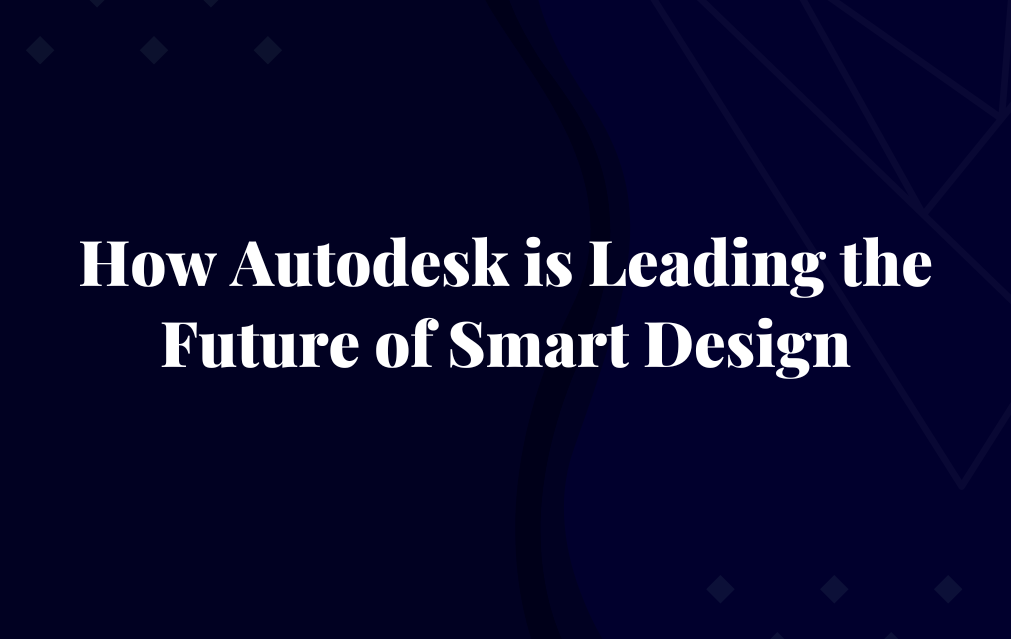
This article describes How Autodesk is Leading the Future of Smart Design
Innovation in design is no longer limited to human creativity alone. With the rise of artificial intelligence (AI), Autodesk is at the forefront of transforming how products, buildings, and machines are conceived. By integrating AI-powered tools like Generative Design in Fusion 360, Autodesk is reshaping industries by optimizing designs in ways that humans might never have considered. From aerospace to automotive, and from architecture to consumer products, Autodesk’s smart design technologies are revolutionizing the way we create.
What is Generative Design?
Generative Design is an AI-driven approach that allows engineers and designers to input specific constraints—such as materials, weight, cost, and manufacturing methods—and then lets the software generate multiple optimized design options. Unlike traditional design methods that rely on iteration and experience, Generative Design explores thousands of possibilities in minutes, providing solutions that balance performance, sustainability, and efficiency.
How Autodesk’s AI is Reshaping Industries
1. Aerospace: Lighter, Stronger, and More Efficient Components
Weight reduction is a critical factor in aerospace engineering. Autodesk’s Generative Design has enabled companies like Airbus to create lighter aircraft parts that maintain strength while reducing fuel consumption. By optimizing materials and structures, AI-driven designs help enhance aerodynamics and minimize waste.
2. Automotive: Pioneering the Future of Mobility
Car manufacturers like General Motors (GM) have adopted Generative Design to reimagine vehicle components. Using Fusion 360, GM developed a next-gen seat bracket that is 40% lighter and 20% stronger than its traditionally manufactured counterpart. With AI, automakers can create safer, more fuel-efficient vehicles with innovative materials and structures.
3. Architecture & Construction: Smarter, Greener Buildings
Autodesk is also transforming the built environment with AI-driven solutions like Forma and Spacemaker. These tools help architects and urban planners analyze environmental conditions, optimize layouts, and improve energy efficiency before construction even begins. The result? Smarter cities, sustainable buildings, and reduced construction waste.
4. Manufacturing: Faster Production, Minimal Waste
By leveraging AI-driven design for additive and subtractive manufacturing, Autodesk is helping manufacturers reduce material costs and improve product durability. Generative Design enables companies to minimize waste in CNC machining, optimize 3D-printing layouts, and streamline supply chains with smarter part designs.
Why Generative Design is the Future of Engineering
Unparalleled Innovation – AI explores design solutions that humans might never think of, breaking traditional design limitations.
Material & Cost Efficiency – Reducing excess materials means lower costs and more sustainable products.
Speed & Automation – Instead of spending weeks refining a design, engineers get optimized solutions within hours.
Performance-Driven Designs – AI generates structures that are stronger, lighter, and better suited for real-world applications.
Autodesk’s AI-powered tools are more than just design assistants—they are game changers that redefine innovation across industries. As technology advances, smart design will continue to push the boundaries of creativity, sustainability, and efficiency. Whether you’re an engineer, architect, or manufacturer, Autodesk’s AI-driven tools empower you to build the future, smarter and faster.
Originally posted 2025-02-05 11:31:03.


















